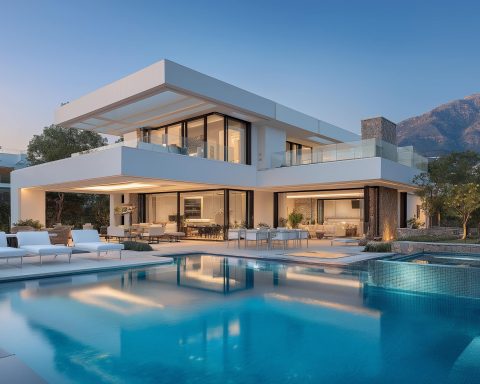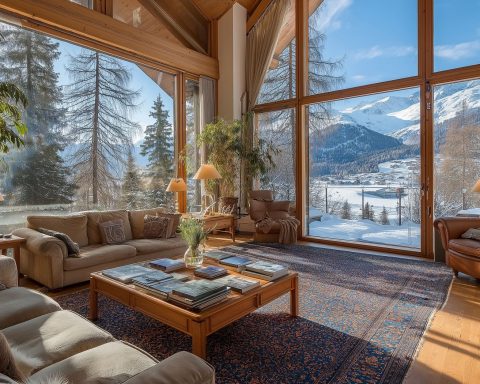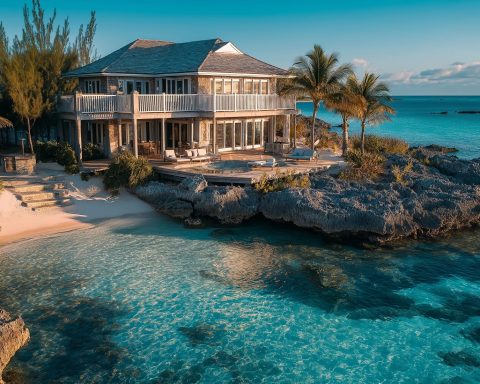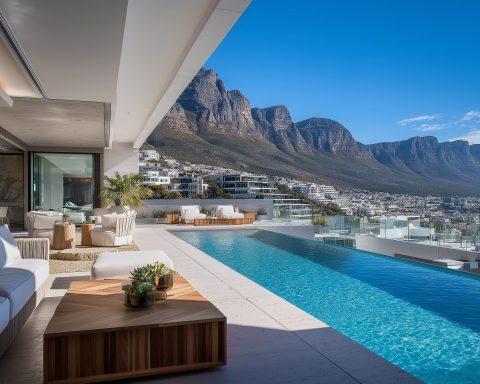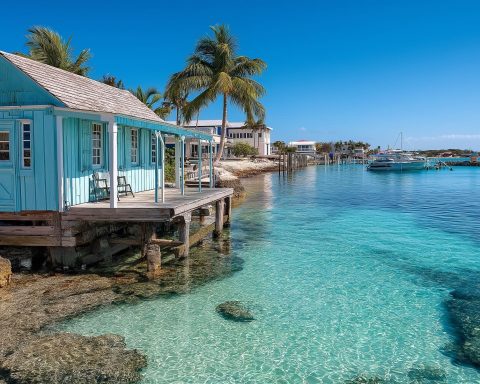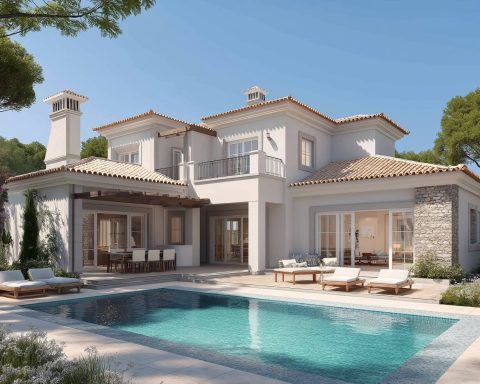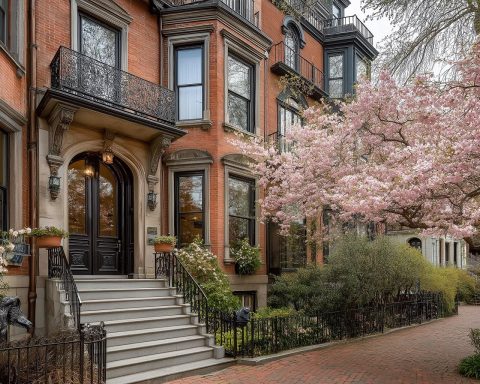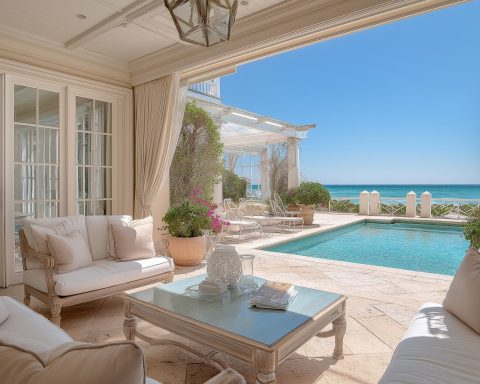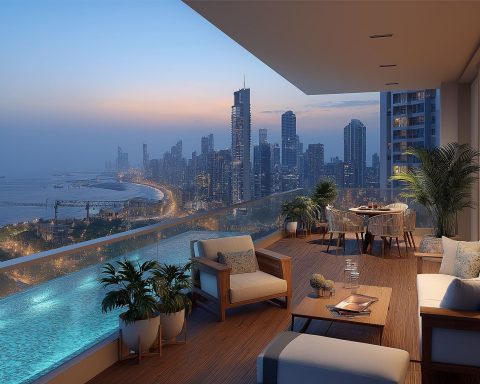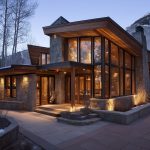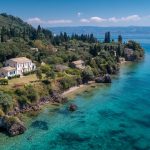St. Moritz, the legendary Swiss ski resort, stands atop the alpine real estate market as one of the most expensive and exclusive property locales in the world. In 2025, its property prices remain stratospheric – higher than any other Alpine resort – with luxury residences commanding CHF 40,000+ per square meter (and CHF 50,000+ for true trophy properties) ubs.com ubs.com. The market surged during the pandemic and now sits at all-time highs, bolstered by Switzerland’s safe-haven appeal and chronic housing scarcity ubs.com ginesta.ch. This comprehensive report examines residential, commercial, and ultra-luxury trends, provides historical and current price data, and analyzes forecasts through the coming years. We also delve into rental yields, new developments, foreign-buyer rules, tax considerations, and demand drivers – while comparing St. Moritz to other Swiss and Alpine luxury markets.
(All prices in Swiss Francs. CHF 1 ≈ EUR 1 as of 2025.)
Residential Market Trends in 2025
St. Moritz’s residential real estate market remains exceptionally tight and expensive. After an extraordinary pandemic-era boom, demand has normalized to pre-2020 levels, yet it stays robust ginesta.ch. Buyers have become a bit more value-conscious, and sales now take slightly longer, but prices are holding steady at record highs ginesta.ch. This stability is underpinned by ultra-low supply – new construction is severely limited – and steady interest from wealthy Swiss and international buyers.
- Limited Supply: Over half of St. Moritz’s housing stock (≈55%) are second homes (holiday apartments) ginesta.ch ginesta.ch. Construction of new holiday residences virtually halted after Switzerland’s 2012 “second-home initiative” (Lex Weber law), which bans new second-home permits in communities where second homes exceed 20% of stock ginesta.ch. In St. Moritz, where second homes far exceed this threshold, new builds are extremely rare, and the total housing inventory grows <1% per year ginesta.ch. This structural shortage props up prices ginesta.ch. Even as post-Covid demand cooled from frenzy to merely strong, seller’s market conditions persist – with availability rates ~2.3% for apartments and 2.5% for houses (well below a “balanced” 6–8% level) ginesta.ch.
- Price Levels: Residential property in St. Moritz commands swiss-leading prices. Even mid-range condos in town trade around CHF 20,000–25,000/m², while luxury apartments reach CHF 25,000–32,000/m² – and truly exceptional penthouses or lakeview chalets can far exceed that* ginesta.ch ginesta.ch. In St. Moritz’s most prized addresses, such as Via Suvretta or Via Brattas, large chalets routinely fetch CHF 40,000+ per m², with a few “unicorn” estates reportedly hitting six-figure CHF per m² prices ginesta.ch ubs.com. Even older single-family homes (a very small segment) cost at least CHF 26,000/m², while modern villas in top locations often run CHF 39,000/m² or more ginesta.ch. By comparison, the median asking price for a typical house (all sizes/locations) in St. Moritz is about CHF 13,300/m² as of mid-2025 (with a range ~CHF 8,000–18,600) homegate.ch – reflecting that even “average” properties here are pricey. Over the last 4 years, St. Moritz house prices jumped +52% in CHF terms homegate.ch, illustrating the meteoric appreciation since 2019.
- Post-Pandemic Plateau: After a brief dip in 2015–2018, values surged sharply during 2020–2022 amid a flight to alpine retreats ginesta.ch. By 2023, prices hit new peaks and growth has since leveled off – especially for flats. Apartment values have roughly tripled (+190%) since 2000, and house values are up ~175% since 2000 ginesta.ch. Following gains of ~5–6% annually in the early 2020s, 2024 saw only modest upticks. Indeed, local agents note upward price pressure has “leveled off” at a high plateau ginesta.ch. Buyers are no longer in a panic-buy mode; they’re negotiating harder and prioritizing fair value and prime location ginesta.ch. Nonetheless, prices remain at record highs, buoyed by minimal inventory and sustained demand from affluent lifestyle buyers ginesta.ch. In short, 2025’s residential market is in a holding pattern at the summit – stable, extremely high-priced, with minor fluctuations but no major correction.
Ultra-Luxury & Ski-Chalet Segment Trends
St. Moritz’s ultra-luxury property segment (“Prime”) continues to lead the Alpine world in both prestige and price. It has maintained its crown as the most expensive ski home market in the Alps ubs.com. In 2024, prime St. Moritz prices rose about +5.6% year-on-year, outperforming most peers knightfrank.com. This pushed prime values ~27% above 2019 levels – a remarkable climb in just five years ubs.com. Key trends in this elite segment include:
- Global Billionaire Appeal: Demand at the top end is truly international. Ultra-high-net-worth buyers from Europe, North America, the Middle East and beyond prize St. Moritz for its “Top of the World” exclusivity and Swiss stability ubs.com. Even as global financial markets wavered in 2023–24, the wealthy kept buying here, seeing Swiss real estate as a safe-haven asset ubs.com. The strong Swiss franc did make Swiss luxury homes pricier for foreigners, but this FX hurdle was offset by many buyers’ desire for a secure alpine retreat ubs.com. Reputation matters: St. Moritz’s century-old brand as a glamorous winter enclave (twice host to the Winter Olympics) continues to draw elite clientele and investment-migration buyers seeking a foothold in Switzerland’s lifestyle.
- Price Momentum Easing: After two years of double-digit growth, prime price momentum slowed notably in 2024. According to UBS, the Swiss luxury segment’s price gains halved to ~+1.2% on average in 2024 (vs ~+3% the year prior) ubs.com. In St. Moritz’s case, condominium prices still rose ~3% in the past year, but top-tier chalets saw flat or negligible growth ubs.com. Essentially, the luxury market hit a price ceiling after prior overshoots ubs.com. Buyers remained interested, but many balked at further steep increases given how far values had run up. Another factor cooling the high-end: Swiss mortgage “stress test” rules (requiring high income to afford multi-million homes) constrain some buyers in the mid-CHF 5–10 million range ubs.com. The pool of potential buyers shrinks at these lofty price points, naturally tempering price acceleration ubs.com. As a result, 2025 has been a year of consolidation for St. Moritz luxury real estate – prices holding or inching up only slightly ubs.com.
- Unmatched Peak Values: Even with slower growth, St. Moritz remains ultra-expensive. In 2025, luxury listings start around CHF 43,000/m² ubs.com, the highest in the Alps. For context, Gstaad’s prime prices start ~CHF 39,000/m² and Verbier’s ~CHF 36,000/m² ubs.com – placing St. Moritz at the pinnacle. Depending on location and pedigree, square-meter prices in St. Moritz routinely exceed CHF 50,000 and in “exceptional cases” have even hit CHF 100,000+ ubs.com. These are Monaco/Aspen-level prices in the heart of the Swiss Alps. Notably, Gstaad and St. Moritz often trade off the title of priciest ski resort: one 2024 survey put Gstaad’s average slightly higher, but St. Moritz had the bigger annual jump (+5.6% vs +4%) knightfrank.com. Either way, together they define the top tier. By contrast, France’s top resort (Courchevel 1850) sees luxury chalets around CHF 30,000/m² – still expensive, but ~30% cheaper than St. Moritz ubs.com. The table below highlights how St. Moritz stacks up against other elite alpine markets:
Table 1: Prime Alpine Property Prices & Recent Growth (2024 data) knightfrank.com ubs.com
| Location (Resort) | Typical Prime Price (CHF/m²) | 2024 Price Change (%) |
|---|---|---|
| St. Moritz (Switzerland) | ≈ 40,000 – 50,000 (up to 100k+ for rarities) ubs.com ubs.com | +5.6% (price momentum slowing) knightfrank.com |
| Gstaad (Switzerland) | ≈ 39,000+ (nearly on par with St. Moritz) ubs.com | +4.0% (strong demand, low supply) knightfrank.com |
| Verbier (Switzerland) | ≈ 36,000+ ubs.com | +2.8% (moderate growth) ubs.com |
| Courchevel 1850 (France) | ≈ 30,000 (top French ski market) ubs.com | +9.0% (tight stock driving gains) knightfrank.com |
| Kitzbühel (Austria) | ≈ 20,000 (highest in Austria) ubs.com | +8.5% (rebound after correction) knightfrank.com |
(Sources: Knight Frank, UBS. “Prime price” refers to high-quality/luxury segment starting values.)
Despite sky-high pricing, interest in St. Moritz’s luxury homes remains resilient. The unique blend of glamour, privacy, and alpine beauty – plus Switzerland’s political/economic stability – continues to attract UHNWIs (ultra-high-net-worth individuals) properstar.mu properstar.mu. Many wealthy buyers see owning a St. Moritz chalet as both a status symbol and a prudent asset allocation (a hard asset in a safe jurisdiction). In summary, the ultra-luxury segment in 2025 is characterized by record-high price levels, slightly cooled growth, and sustained global demand – a market catching its breath atop the peak.
Commercial Property and New Developments
Commercial real estate in St. Moritz is driven largely by the tourism sector – luxury hotels, upscale retail boutiques, restaurants, and services that cater to affluent visitors. The health of the commercial market closely follows tourism trends, which have been very strong. In 2023, St. Moritz recorded its second-best year in a decade for hotel nights, with over 1.7 million overnight stays in the Upper Engadin region (90% of those in the St. Moritz area) ginesta.ch. This boom in visitors (especially high-spending tourists) has kept demand high for hospitality space and retail units on the prestigious shopping streets. Key points include:
- Retail/Hotel Demand: St. Moritz’s “designer village” vibe – lined with Cartier, Gucci, and art galleries – means commercial rents are among the highest in the Alps. Prime retail space is limited around the Bahnhofstrasse and Palace hotel district, and vacancy is virtually nil in peak seasons. Luxury brands covet a presence here for the branding and wealthy clientele, keeping retail real estate solid. Hotels likewise have thrived on rising room rates and occupancy, prompting renovations and upgrades (e.g. the historic Badrutt’s Palace Hotel underwent refurbishments to stay competitive). New hotel development, however, is constrained by building limits and preservation rules in this region. Instead, existing properties are modernized to 5-star standards to capture demand.
- New Development Projects: Residential development is extremely limited by law, but a few noteworthy projects are in pipeline, often by repurposing older sites. For example, the “Residence du Lac” project (2024–25) is converting a former lakeside building into modern apartments, focusing on sustainable timber construction and mixed unit sizes for locals timbatec.com timbatec.com. Emphasis is on high-quality, eco-friendly design (built to Minergie-P-Eco standards) to meet today’s efficiency and luxury expectations timbatec.com. Because St. Moritz cannot build new holiday homes freely, most new residential builds are either for primary residence use or require special exemptions. Some older hotels or clinics have been converted into residences or mixed-use developments – one recent example being a former clinic site redeveloped into an arts venue and future condos (as showcased during the Nomad design event in 2025). Overall, new supply trickles in only via redevelopment of existing structures, given the blanket ban on new second homes in this high-second-home zone ginesta.ch.
- Infrastructure Upgrades: The region continues to invest in tourism infrastructure, though not without challenges. Ski lift systems are being modernized where possible – e.g. plans to replace the 50-year-old Signalbahn cable car at St. Moritz-Bad with a higher-capacity gondola were initiated snowindustrynews.com. However, in 2023 Switzerland’s Federal Court halted the Signalbahn replacement project due to environmental and planning concerns (forest protection, etc.) snowindustrynews.com snowindustrynews.com. This highlights the strict regulatory environment even for infrastructure: projects must carefully balance environmental impact, and delays are common. Despite setbacks, St. Moritz’s lift operators and the town are committed to maintaining world-class facilities. Significant funds have been invested in snow-making, lift upgrades, and year-round amenities across the Engadin. In fact, climate adaptation is a priority – many alpine resorts (including St. Moritz) are heavily funding technology to ensure reliable snow and diversify summer activities naef-prestige.ch.
- Commercial Outlook: The commercial real estate outlook is stable-positive, tied to tourism prospects. With international travel normalization post-pandemic, St. Moritz sees strong winter bookings and growing summer visitation (the summer lift-pass usage is up +46% since 2021 as the Alps promote year-round tourism) naef-prestige.ch. This boosts confidence for restaurants, shops, and hotels, thereby supporting rents and occupancy in commercial properties. One constraint is staffing/housing: the shortage of worker housing (due to second-home limits) is prompting some businesses to invest in staff accommodation solutions in surrounding villages. Notably, a nearby ski area (Lech in Austria) even built new staff housing in 2025 – an issue Swiss resorts are eyeing as well snowindustrynews.com. In St. Moritz, the local government and employers may need to facilitate workforce housing to sustain service levels in peak seasons.
In summary, while no big commercial developments (like new malls or office parks) are happening – which is typical for a resort town – the commercial property scene is robust, fueled by luxury tourism. Upgrades to infrastructure and careful, small-scale developments will continue, reinforcing St. Moritz’s position as a premier alpine destination year-round.
Historical Price Trajectory & Current Values
St. Moritz real estate has a long history of extraordinary price growth. Over the past ~20 years, property values in the town have roughly tripled, far outpacing Swiss national averages. Prices climbed steadily through the 2000s, dipped slightly mid-2010s, then soared in the late 2010s and especially 2020–2022. Today’s prices are the highest on record. Below is a summary of key pricing metrics as of 2025:
Table 2: Key St. Moritz Property Market Indicators (2025)
| Indicator (Residential) | Value / Trend |
|---|---|
| Median house price (ask) | CHF 13,300/m² (mid-2025) – median listing, all areas homegate.ch. Up ~+52% vs 4 years ago homegate.ch. Reflects broad market, incl. older and outskirts. |
| Prime luxury price (avg) | CHF 40,000/m²+ – typical for prime apartments/chalets ubs.com. Ultra-prime sales at CHF 50k–60k/m²; rare trophies higher ubs.com. St. Moritz leads Alps in this metric. |
| 1-year price change (2024) | ≈ 0% to +3% (varies by segment) – luxury segment +1.2% avg ubs.com; St. Moritz prime +~5% knightfrank.com; broader market roughly flat to +2%. Indicates plateauing after prior surge. |
| 5-year price change (2019–24) | +25% to +35% – St. Moritz luxury ~+27% ubs.com; overall residential ~+30% (est.). Strong growth fueled by pandemic-era demand spike and limited supply. |
| Supply on market (2024) | 2–3% of stock – Extremely low availability. Owner-occupied apt supply rate ~2.3% ginesta.ch. Homes ~2.5%. Indicates tight inventory; properties often sell off-market. |
| Second-home share | 54.7% of homes are second residences (not primary) ginesta.ch. New second-homes banned since 2012 in St. Moritz (Lex Weber) ginesta.ch, constraining supply and new inventory. |
| Typical rental yield (long-term) | ~2–3% gross per annum – relatively low due to high capital values investropa.com. St. Moritz yields resemble Zurich/Geneva prime (2–3%). Net yields even lower after costs. |
| Short-term rental yield (holiday let) | ~5–7% gross (peak-season) – premium holiday rentals can earn higher yields investropa.com, but require active management and face seasonal occupancy swings. |
(Sources: Homegate, UBS, Wüest Partner, Investropa. Figures are approximate.)
As the table shows, St. Moritz property is characterized by astronomical values and modest rental returns. The price-to-rent ratio is very high – a reflection of the fact that owners are usually lifestyle buyers rather than yield-seeking investors. For instance, while a CHF 5 million St. Moritz apartment might only generate ~CHF 100k/year in long-term rent (2% yield), owners accept that because they value personal use, asset safety, and appreciation potential. Indeed, capital appreciation has been the main reward historically: even after the recent cooling, St. Moritz homes appreciated ~+5–6% annually over the last five years, far above inflation. Over a longer horizon, the trajectory is even clearer – from 2000 to 2024, local residential prices nearly tripled in real terms ginesta.ch. Few markets globally have matched this sustained growth.
In current terms (2025), one could summarize: “St. Moritz real estate is extremely expensive, inventory is scant, and prices are holding at peak levels with only slight recent growth.” The fundamentals of limited supply and high demand suggest that any price softening would likely be shallow. In fact, as discussed next, the forecast is for stability or gentle gains ahead rather than any significant drop.
Market Forecast: 2025 and Beyond
The outlook for St. Moritz’s property market in the coming years is broadly stable, with slight growth expected – a continuation of “high-level consolidation.” Multiple reputable forecasts indicate that 2025 will see muted price increases in line with inflation, after which moderate growth may resume. Key factors shaping the forecast include interest rates, global economic conditions, and local supply constraints:
- 2025 – A Year of Consolidation: UBS’s analysts anticipate 2025 as another year of consolidation for Swiss luxury real estate, with price increases remaining very restrained (similar to 2024’s ~1% level) ubs.com. Ginesta (a local brokerage) likewise expects “stable to slightly increasing market prices in lockstep with inflation” in the near term ginesta.ch. In other words, nominal prices might edge up by ~0–2% over 2025, basically keeping real prices flat. The rationale: elevated price levels have shrunk the buyer pool, and the post-pandemic frenzy has cooled ubs.com. Additionally, Switzerland saw interest rates rise from their 0% floors in 2022, and although rate cuts are anticipated by 2025–26, financing costs are still higher than the ultra-loose era – tempering buyers’ maximum budgets. The Swiss economy is also growing only slowly (~1% GDP growth), meaning no big demand spike on the horizon engelvoelkers.com. All these point to a period of price stability rather than a new boom. Notably, even this “sideways” outlook is at very high price levels, so the market is essentially pausing at the peak.
- Structural Upward Pressure: Longer-term, analysts are cautiously bullish. UBS observes that structural factors (high net worth demographics, people living longer and using vacation homes more, etc.) will “continue [the] upward [price] trend for the foreseeable future” ubs.com. Demand tailwinds include wealthy retirees and second-home seekers from around the world, while supply will remain strictly limited due to the second-home cap ginesta.ch. This imbalance suggests that after the current pause, prices should resume a gentle climb. For example, Wüest Partner (Swiss real estate consultancy) forecasts Swiss owner-occupied home prices to rise ~+3% in 2025 engelvoelkers.com, and possibly a similar pace in 2026–27 if interest rates ease. St. Moritz, being a unique micro-market, may not hit +3% in the immediate year, but a return to ~+2–4% annual appreciation by 2026–2027 is plausible if global economic conditions improve. Some industry experts indeed foresee a moderate re-acceleration: one luxury property outlook predicts St. Moritz prices could increase ~+2.5% to +4.0% in 2026, with the strongest gains in the most prestigious areas like Suvretta theluxuryplaybook.com. This would be a pickup from the near-flat 2024–25 and align with a scenario of renewed confidence as borrowing costs normalize downward.
- Key Variables: The interest rate trajectory is critical. The Swiss National Bank raised rates from –0.75% to +1.75% (by mid-2023) to combat inflation, but inflation has since fallen below 1% engelvoelkers.com. If the SNB starts cutting rates in late 2024 or 2025 (as many expect), mortgage conditions will improve and could unlock fresh demand engelvoelkers.com engelvoelkers.com. Already, Swiss 10-year bond yields have come off highs, and some mortgage rate cuts have been seen, which “boosted buyers’ willingness to pay” in 2024’s luxury market ubs.com. Another factor: global wealth trends. St. Moritz’s fate is tied to the wealth of billionaires – and despite some market volatility, the ultra-rich have only gotten richer in recent years properstar.mu. Barring a major financial crisis, HNW individuals are expected to keep allocating part of their wealth to hard assets like prime property. However, an economic slowdown in Europe or geopolitical shocks could dampen demand in the short run ubs.com. UBS notes that if European growth stays subdued and inflation erodes purchasing power, some potential buyers may defer vacation-home purchases ubs.com. Thus, 2025’s slow growth outlook incorporates a cautious view of the economy.
- Overall Projection: Baseline expectations are that St. Moritz real estate values will remain stable or tick upward modestly through 2025, and then accelerate slightly in subsequent years. We are unlikely to see a crash absent forced selling (which is rare, since wealthy owners are not highly leveraged or pressured to sell) engelvoelkers.com. In fact, owner-occupiers in Switzerland typically hold through interest rate fluctuations, preventing any flood of supply engelvoelkers.com. Therefore, downside risks are limited. On the upside, any new wave of foreign interest (for example, if certain travel markets reopen fully or if the Swiss franc weakens) could quickly reignite price growth given the scarcity of homes. In summary: expect a soft landing at the summit – prices staying at their “high plateau” in 2025, then resuming gradual climbs in line with economic recovery and ongoing demand.
(As a note, one wildcard is regulatory change: see foreign buyer rules below – tighter rules could slightly cool demand, whereas any loosening (unlikely) would spur it.)
Rental Yields and Buy-to-Let Potential
Investors considering buy-to-let opportunities in St. Moritz should be aware that rental yields are relatively low, especially for long-term rentals, but high-end short-term rentals can generate attractive seasonal income. The market here is primarily driven by lifestyle buyers, not yield investors, which affects the rent-to-price ratio. Key points:
- Long-Term Rental Yields: Gross yields on residential property in St. Moritz are typically in the 2%–3% per year range investropa.com. This is comparable to other premium Swiss locales (Zurich, Geneva), which also see ~2–3% yields, and is considerably lower than yields in cheaper regions (where 4–5% is common) investropa.com. For example, a 4-room apartment purchased for CHF 3 million might rent for around CHF 6,000–7,000 per month unfurnished – about CHF 72k–84k annually (≈2.5% of the purchase price). Such low yields reflect the sky-high property values rather than low rents; indeed, rents in St. Moritz are among Switzerland’s highest on a per-m² basis. But prices are so elevated that the rent can’t “catch up”, resulting in modest yields. Net yields (after expenses, maintenance, property taxes, etc.) would be even lower, around 1–2%. Investors often accept these scant returns because they bank on capital appreciation and asset security. In fact, many owners don’t rent out at all, preferring exclusive personal use.
- Holiday Rental Potential: The short-term rental market (vacation lets) offers higher income potential, especially during peak ski season. Luxury chalets and apartments can command very high weekly rates in winter – it’s not uncommon for a well-located 4-bedroom chalet to rent for CHF 15,000–20,000 per week over New Year’s or in February. Over the roughly 10–12 prime winter weeks, such a property might gross CHF 150k+, which annualizes to ~5%+ of its value. According to investment advisors, short-term rentals in approved tourist areas can yield 5–7% gross annually – but this assumes one can rent the unit for a good portion of the year investropa.com. St. Moritz has a long winter season and a growing summer season, but occupancy will still be much lower off-season. Realistically, a diligent owner or rental agency might achieve, say, 15–20 weeks of rental occupancy at high rates, yielding perhaps 3–5% of the property value in income – better than a long-term lease, but requiring active management. There are also more costs (marketing, cleaning, commissions) and legal requirements (tourist tax registrations, etc.). Nevertheless, for owners willing to rent out their homes when not in use, St. Moritz offers one of the strongest short-let markets in the Alps, thanks to the constant stream of affluent tourists.
- Regulations & Vacancy: It’s important to note that short-term rentals are generally allowed in resort zones like St. Moritz (unlike some Swiss cities that restrict Airbnb-style renting). In fact, the town’s economy welcomes tourist rentals. However, condo owners may face bylaws or management rules about renting, and all landlords must remit a small “Kurtaxe” (tourist tax) per guest/night and ensure their rental meets safety standards. The concept of “Lex Airbnb” hasn’t hit St. Moritz in a big way – short-lets remain a common practice, often arranged through local agencies or high-end rental platforms. During peak ski weeks, demand for rental chalets far exceeds supply, so vacancy risk in those times is near zero. Off-season (spring, late autumn) the property could sit empty – owners often use those periods for maintenance.
- Buy-to-Let Profile: Pure investment buyers are relatively few in St. Moritz because of the low yields and the Lex Koller restrictions (non-resident foreigners can’t easily buy purely as an investment – see next section). Those who do buy to rent typically have a long-term horizon and a dual goal: renting out now to offset costs, and eventually using the property for themselves (or for resale). Given Switzerland’s strong tenancy laws and stable rental demand nationally, some investors see even a 2–3% yield as acceptable for a rock-solid asset. Moreover, rents are currently rising in Switzerland due to housing shortages – nationally, asking rents were up ~+2.2% year-on-year in early 2025 homesoverseas.ru. In St. Moritz, a limited supply of rental apartments (only ~44% of local housing is rental ginesta.ch, and many of those are occupied by locals) means expats or seasonal workers compete for the few available flats, driving rents upward. This could modestly improve yields over time (if prices stay flat and rents climb). Still, one should not expect cash-flow riches in this market; the true “yield” of St. Moritz ownership is often measured in lifestyle dividends and long-term appreciation, rather than high ongoing income investropa.com.
In summary, rental yields in St. Moritz are moderate at best, and negative leverage (mortgage rates exceeding yield) is possible in high-rate environments. Prospective landlords should treat it as a hybrid investment: part income property, part luxury asset. Many do successfully offset some costs via holiday rentals – effectively getting paid while their asset likely gains value. But as a pure yield play, St. Moritz is outshined by lower-cost markets. (By comparison, an investor might get 4–5% yields in Valais or Austria, albeit with far less capital safety.) Each owner must weigh these factors based on their financial goals.
Foreign Ownership Regulations and Restrictions
Switzerland maintains strict laws on foreign property ownership – and St. Moritz, as a coveted resort, is subject to these rules. The two key regulations are Lex Koller (restrictions on non-resident foreigners buying real estate) and Lex Weber (the second-home cap, discussed earlier). Here’s what foreign buyers need to know:
- Lex Koller (Foreign Buyer Permits): Under the federal Lex Koller law, non-resident foreigners face limits when buying Swiss property. In general, **foreigners without Swiss residency cannot buy ordinary residential property in most of Switzerland (e.g. Zurich, Geneva) investropa.com. The law carves out exceptions for designated tourist areas (mostly ski resorts and vacation regions) where foreigners may purchase a holiday home with a special permit, subject to quotas. St. Moritz is one of these areas, but permits are limited. Key points:
- A non-resident (living abroad) may buy one holiday home of up to ~200 m² of living space in an approved commune investropa.com. They must obtain cantonal approval, which can take a few weeks investropa.com. The number of foreign permits per year is capped – Graubünden canton has a yearly quota, and popular spots like St. Moritz often hit their quota quickly. This means competition for foreign buyer permits; some years you may need to wait for the next allotment.
- Foreigners cannot buy property purely for rental investment – the home should be for their own vacation use predominantly (though renting it out when not using is generally allowed). Additionally, no buying of multiple units; one permit = one property per foreigner.
- EU/EFTA residents living in Switzerland with a B permit, or any foreigner with a Swiss C permit, are treated like Swiss domestic buyers (no permit needed) ubs.com. So, many international buyers first establish Swiss residency (often via a job transfer or the lump-sum tax resident program) and then purchase without restriction. In fact, those on a residency permit B (non-EU) can directly buy a primary residence for themselves with no special approval ubs.com.
- Enforcement: If a non-resident buys via a Swiss company or other loophole, they still fall under Lex Koller – authorities have cracked down on creative structures. Essentially, the Swiss property market is not “free-for-all” for offshore buyers; it’s tightly controlled to prevent excessive foreign speculation and preserve housing for locals.
- Local Quotas in St. Moritz: St. Moritz historically has had very few new opportunities for foreign buyers. Many existing luxury chalets are already foreign-owned (from decades past). When they sell, a new foreign buyer can usually take over that permit, but fresh permits for new developments are scarce. Some nearby towns (like Davos or Klosters) have had more liberal policies at times, but overall, the Upper Engadin remains cautious on foreign sales investorsinproperty.com. Interestingly, Andermatt was granted an exemption from Lex Koller to spur development – attracting many foreign investors – but St. Moritz has no such exemption. This keeps demand high relative to supply for the foreign-eligible homes.
- Lex Weber (Second-Home Law): As mentioned, since 2012 new second homes can’t be built in St. Moritz because it far exceeds the 20% threshold ginesta.ch. This doesn’t prevent foreigners from buying existing homes, but it does limit new inventory that foreigners could buy. Also, cantons can prioritize selling new units to Swiss residents in some cases. St. Moritz’s housing policy essentially funnels foreign buyers into a small segment of re-sale holiday apartments and chalets.
- Future Tightening: Notably, in 2023 the Swiss government announced plans to tighten Lex Koller rules further. Proposed changes (not yet law) may include: disallowing non-EU foreigners on B permits from buying primary residences without approval, forcing foreign owners to sell if they give up Swiss residency, and possibly restricting foreigners from buying shares in resort aparthotels ubs.com. These measures are aimed at easing housing shortages for locals ubs.com. The exact proposals are still being debated, but foreign buyers should stay aware that Switzerland’s stance is not liberalizing; if anything it’s becoming more restrictive. Any new rules, however, would likely grandfather existing owners.
- Practical Impact: For the St. Moritz market, foreign demand remains a significant but controlled factor. Many buyers from abroad circumvent Lex Koller by relocating to Switzerland (often taking advantage of the lump-sum tax residency program which offers favorable taxation for wealthy foreigners) – effectively becoming “locals” for buying purposes. Those who do buy as non-residents must love the property enough to navigate bureaucracy and accept Swiss usage rules. The restriction on floor area (around 200 m²) for foreign-bought holiday homes means the mega-chalets (500 m²+) can usually only be bought by Swiss or resident foreigners – a limiting factor for some ultra-rich international buyers.
In summary, St. Moritz welcomes foreign buyers but under Swiss terms. The rules keep the market from being overrun by speculative foreign money – contributing to its stability. Foreigners who do buy here tend to be committed long-term (often eventually becoming part-time residents). For would-be buyers: obtaining expert legal guidance on Lex Koller is essential, but the dream of owning a piece of St. Moritz is certainly achievable for those who meet the criteria. Just move fast – the permit quotas are small and prized.
Tax Considerations for Property Buyers and Investors
Switzerland’s tax regime for property is complex, with variations by canton, but some general principles apply. A property purchase in St. Moritz (canton Graubünden) will entail transaction taxes, annual ownership taxes, and potential capital gains taxes on resale. Here are the key tax considerations:
- Property Transfer Tax (Handänderungssteuer): This is a one-time tax levied upon purchase, similar to stamp duty. In Graubünden, the rate is set by each commune up to a cantonal max of 2.0% en.comparis.ch en.comparis.ch. St. Moritz’s rate is around that maximum (~2%). Typically, the buyer pays the transfer tax in this canton en.comparis.ch. For example, on a CHF 5 million chalet purchase, the transfer tax would be about CHF 100,000. (Some contracts may split this cost by agreement, but default is buyer.) Compared to many countries, 2% is moderate – note Geneva’s is 3%, and some Swiss cantons have none en.comparis.ch en.comparis.ch. Additionally, notary and land registry fees will apply – usually ~0.2–0.5% combined in Graubünden (notary ~0.1–0.3%, registration a few tenths of a percent) ubs.com ubs.com. These are often split between parties as negotiated.
- Annual Property Taxes: Switzerland has no nationwide property tax, but many cantons levy either a wealth tax on net assets (including real estate) and/or a dedicated property tax (Liegenschaftssteuer). Graubünden does levy an annual property tax on the full tax value of real estate, roughly on the order of 0.3–0.5% (the exact rate in St. Moritz commune can vary year to year) – this is in addition to the normal wealth tax on net assets. All owners must also declare the property’s value as part of their taxable wealth each year, since Switzerland taxes personal net worth (at graduated rates typically maxing around ~0.5–0.7% in GR for high net worth) ubs.com. For a foreign non-resident owner, you will have a limited tax liability in Switzerland on the property – generally the cantonal authorities will tax you on the property’s “imputed rental value” (see below) as a form of income and the property’s value as wealth, even if you live abroad. Double-tax treaties often ensure you don’t pay full freight in both countries, but professional advice is needed in such cases.
- Imputed Rental Value Tax: Switzerland uniquely taxes homeowners on the theoretical rental income they would earn if they rented their home out. This “Eigenmietwert” (imputed rent) is added to the owner’s taxable income each year ubs.com. In practice, for a holiday home, if you are Swiss or a Swiss tax resident, you’d pay income tax as if you earned rent from your own second home (less any actual rental income you did earn – you aren’t double-taxed). However, mortgage interest and maintenance costs are deductible against this imputed income ubs.com. Many owners with no or low mortgage find imputed rent tax burdensome, effectively paying tax for enjoying their own home. Important update: In 2024, the Swiss Parliament voted to abolish the national imputed rental value tax for primary residences and second homes, and to allow cantons to tax second homes in other ways instead ubs.com. This reform is slated to be subject to a public referendum, and if approved, would take effect no sooner than 2026 ubs.com. It means that in a few years, owners might no longer be taxed on imputed rent, which would be a relief, but canton Graubünden (and others) could introduce a new flat second-home tax to compensate. Foreign owners not tax-resident in Switzerland currently pay a quasi-imputed rent tax to the canton on their holiday home; how the reform affects them will depend on cantonal implementation. In any case, 2025 status quo: imputed rent is still taxed as income, so factor that in (it can be several tens of thousands CHF of taxable “income” on a high-value home).
- Rental Income Tax: If you do rent out your property, actual rental income is of course taxable as income as well. For non-resident owners, typically Swiss authorities will tax the rental income (after allowed deductions) from Swiss property at source. If you are Swiss-resident, it just adds to your normal income. Given high income tax rates for top earners (combined federal/cantonal can be ~20-30%+), the ability to deduct mortgage interest and maintenance is crucial in reducing taxable rental profits (often wiping them out on paper). Switzerland’s tax system can be advantageous to leveraged owners: with low yields and high interest costs, many buy-to-let owners have minimal net taxable income from the property.
- Capital Gains Tax: Switzerland imposes a property gains tax on the profit from selling real estate. This is a cantonal tax and is heavily dependent on how long you held the property. It is designed to discourage flipping/speculation. In Graubünden, short-term owners face very high CGT rates (on a sliding scale up to ~50% of the gain if sold within a year or two). The tax then decreases with each year of holding; after a certain hold period (often 10–15 years), the rate drops to around 0–10%. For instance, selling after 5 years might incur ~30% tax on the gain, whereas selling after 20 years might incur very little. The exact formula in GR: profits are taxed by canton and commune, with effective rates from ~25% up to ~50% if held only a few years investropa.com. If you hold long enough, some cantons fully exempt gains; others reduce to a low flat rate. It’s worth planning for CGT if you think you may resell in under a decade – it can take a big bite. Also, no “1031 exchange” or deferral is available unless you buy another property in Switzerland as a primary residence (and even that has limits). Essentially, property gains tax is a significant cost to consider, but can be minimized by long-term holding – which aligns with the typical St. Moritz owner’s approach anyway ubs.com.
- Annual Ownership Costs: Aside from taxes, remember to budget for annual maintenance, condo fees (if apartment), insurance, and utilities. A rule of thumb is ~0.5%–1% of property value per year in upkeep costs for luxury homes (which in St. Moritz could be CHF 20k+ annually). If part of a condominium (PPE), quarterly building charges will apply, covering common area heating, caretaker, sinking fund, etc., often several CHF per m² per month.
- Tax Treaties & Lump-Sum: If you are moving to St. Moritz as a resident, note that foreigners not working in Switzerland might be eligible for lump-sum taxation – a special flat tax based on living expenses rather than income, negotiated with the canton investropa.com. Many wealthy expats choose this route; it can make the tax on global income nil, with a fixed yearly tax often in six figures CHF. Canton Graubünden does offer lump-sum deals to qualified individuals (though some cantons have abolished it). This doesn’t directly affect property taxes, but it affects your overall tax picture. For non-residents, Swiss taxes on the property are usually creditable against home-country taxes due to treaties.
In summary, Switzerland’s property taxes are not low, but they are predictable and often lower than the tax load in many other luxury property markets (consider the 6-7% stamp duties in London or annual wealth taxes in France, etc.). One highlight: there is no annual nationwide “property value tax” beyond wealth tax – and wealth tax in Switzerland, while noticeable, has relatively low rates compared to, say, some U.S. property taxes that are ~2% of value annually. Also, inheritance tax: Graubünden does not tax direct descendants on inheritances, meaning you can leave Swiss property to children without inheritance tax in most cases (some cantons differ). Overall, Switzerland’s tax system rewards long-term ownership and personal use. Buyers in St. Moritz should engage a tax advisor to optimize ownership structure – but can generally count on a stable regime. If the imputed rent tax is abolished by 2026, second-home owners could see a tax shift (perhaps a new flat tax per property). Keep an eye on that reform, as it directly targets places like St. Moritz with many second homes ubs.com.
Demand Drivers: Tourism, Lifestyle, and Investment Migration
What makes St. Moritz’s real estate so in-demand? The answer lies in a unique confluence of lifestyle appeal, international cachet, and financial/security benefits that few places can match. Here are the major demand drivers:
- World-Class Tourism & Lifestyle: St. Moritz offers a privileged alpine lifestyle that consistently draws the global elite. The town is synonymous with glamour – hosting events like the Snow Polo World Cup, White Turf horse races on the frozen lake, and gourmet festivals. It boasts 300 days of sunshine a year, top-tier skiing (350 km of pistes, plus Cresta run, bob run, etc.), and luxury amenities from Michelin-starred restaurants to designer shopping. This alluring lifestyle keeps wealthy vacationers coming back and often evolving into property owners. The tourism statistics reinforce this: 2023 saw record hotel stays (the second best year in a decade) ginesta.ch. Even more telling, the Upper Engadin’s growth outpaced the rest of Graubünden, indicating St. Moritz’s strong draw ginesta.ch. About 53.5% of hotel guests were Swiss in 2023 (down slightly from 58% the year prior as more international visitors returned) ginesta.ch, meaning nearly half were foreign – a sign of regained global interest post-pandemic. High tourism demand eventually converts to real estate demand: many international visitors fall in love with the Engadin and decide to purchase a holiday home for extended stays. The ongoing pivot to year-round tourism (hiking, biking, sailing, culture in summer) has extended the season, making owning a home here even more appealing beyond winter naef-prestige.ch.
- Prestige and Rarity: There is only one St. Moritz – the brand carries prestige similar to Monaco, Aspen, or Courchevel. Owning property here is a status symbol. This “trophy asset” factor means demand is relatively insensitive to price: wealthy individuals often buy for emotional and lifestyle reasons rather than pure value. The town’s glamour (famously dubbed “Top of the World”) and its role as a pioneer of winter tourism create an evergreen desirability. Moreover, the supply is finite and getting tighter (no new second homes by law), so owning in St. Moritz is literally becoming more exclusive each year – a powerful motivator for those who can afford it.
- Safe-Haven Investment: Switzerland’s political neutrality, economic stability, and strong currency make St. Moritz property a safe-haven investment as well as a lifestyle choice. During times of global uncertainty, wealthy investors often increase holdings in Swiss assets (the franc tends to appreciate in crises). UBS notes that despite weaker economic growth, the “local luxury real estate market is still likely to benefit from its reputation as a ‘safe haven’” ubs.com. Property here offers capital preservation – Swiss law is highly protective of property rights, and the banking system is robust for financing if needed. For international buyers from less stable regions, converting some wealth into Swiss real estate is a form of wealth insurance. This demand is part of a broader “investment migration” trend, where affluent families acquire homes in stable countries as plan B/residency options. Switzerland doesn’t have a golden visa per se, but its lump-sum tax program has attracted many millionaires, who in turn purchase prime homes (often in resort areas where permits allow). So, macroeconomic and geopolitical anxieties can actually boost demand for St. Moritz real estate, as it’s seen as a tangible, stable store of value in turbulent times.
- Quality of Life and Privacy: Beyond glitz, St. Moritz offers an excellent quality of life. Switzerland ranks at the top globally for safety, cleanliness, health care, and environmental quality harveylawcorporation.com harveylawcorporation.com. Engadin’s environment – fresh air at 1,800m altitude, low crime, well-maintained infrastructure – is a huge draw. For wealthy buyers with families, the region is attractive for its privacy and security (no hordes of paparazzi, and Swiss discretion is famous). Unlike some seasonal resort towns, St. Moritz functions year-round with good services, international schools in reach (e.g. Lyceum Alpinum Zuoz nearby), and hassle-free living. This convinces some to not just holiday here but semi-relocate (spending several months a year). The fact that roughly 43% of St. Moritz’s population are foreigners (many of them well-off expats) underscores its international community appeal ginesta.ch ginesta.ch.
- Comparative Advantage: Compared to other luxury ski markets, St. Moritz benefits from Switzerland’s relatively reasonable property transaction costs and low taxes on residents. There are no restrictions for foreign residents to buy once they live here, unlike Austria where even residents face limits in tourist zones. And while France or Italy allow foreign buying freely, those countries have heavier wealth and inheritance taxes which some investors dislike. Switzerland’s stable low-tax environment (especially if lump-sum deals are secured) is a big incentive. Additionally, St. Moritz’s transport access is improving – the Alps’ first electric mountain railway started here, and today one can reach via the Engadin airport (private jets) or a 2h45 train from Zurich (with the new Albula Tunnel, reliability is better). Good connectivity means easier enjoyment of the home, feeding demand.
In summary, demand for St. Moritz property is driven by a potent mix of lifestyle allure, prestige, and financial prudence. The town’s ability to constantly reinvent itself – e.g., hosting new cultural events, embracing year-round sports, upgrading its luxury offerings – keeps it relevant to new generations of buyers. And broader trends (remote work enabling more time in holiday homes, UHNW wealth growth, etc.) support this demand. No single Alpine resort has the same combination of features, which is why St. Moritz stays at the top of shopping lists for luxury property hunters, even as they compare with places like Gstaad, Zermatt, Courchevel, or Aspen.
Comparison with Other Swiss and Alpine Luxury Markets
St. Moritz is often measured against a handful of other high-end alpine markets. Here’s how it compares on key fronts to both Swiss rivals and elite ski resorts abroad:
- Within Switzerland: The main peers are Gstaad, Verbier, Zermatt, and perhaps Andermatt (emerging thanks to foreign-buyer exemption). Price: St. Moritz and Gstaad tend to vie for the top price spot. According to UBS, Engadin/St. Moritz has the highest minimum price for high-quality vacation homes at ~CHF 22,300/m², just edging Verbier (CHF 22,100) ubs.com. Zermatt and Gstaad also start north of CHF 20,000 ubs.com. However, in absolute ultra-prime, St. Moritz/Gstaad/Verbier all see CHF 35,000+ in prime locations ubs.com. Knight Frank’s 2024 Alpine report showed Gstaad’s average prime price slightly above St. Moritz’s (in euro terms), but with St. Moritz having higher growth that year knightfrank.com. Growth: Recently, Zermatt actually led 5-year growth (CAGR ~7.4%), with St. Moritz ~5.9%, Verbier ~4.9%, while Gstaad lagged (~0.7% 5-year) ubs.com ubs.com – possibly as Gstaad was already “priced to perfection” earlier. Market makeup: Gstaad is even more purely secondary-home driven and has a small year-round population; St. Moritz is a larger town with more hotels and diversified tourism. Verbier and Zermatt are in francophone and German-speaking regions respectively, but all Swiss resorts benefit from Switzerland’s stability. Foreign buyers: Gstaad historically had many international (notably Middle Eastern) buyers; St. Moritz has more Europeans (Italian, German, British) and lately Americans. All are subject to Lex Koller quotas – interestingly, some cantons like Valais (Verbier, Zermatt) had more foreign permit headroom historically, whereas Berne (Gstaad) and Graubünden (St. Moritz) were stricter. For example, Andermatt (Uri canton) is unique with no permit required – that attracted a lot of foreign investors and saw prices jump 9% annually over 5 years ubs.com. But Andermatt’s absolute prices (~CHF 20k/m² max) remain lower and its cachet not yet equal to the “Big Three.” Rental yields: All Swiss resorts have similar low yields (2–3%). One exception: some new apartments in Andermatt offered rental programs boosting yields slightly (and no owner usage limits), but generally Swiss luxury = low yield, high security.
- Versus French Alps: Courchevel 1850 is often considered the closest competitor in glitz and price. Its top homes fetch around CHF 30k/m² (EUR 31,900) ubs.com – about 25% below St. Moritz’s top tier. However, Courchevel saw a big +9% jump recently knightfrank.com due to tight supply, actually outpacing Swiss growth that year. Other French resorts like Val d’Isère start around CHF 14k/m² for good properties (luxury up to ~CHF 15–20k) ubs.com. Megève and Chamonix have five-figure per m² prices too but generally < CHF 15k. France offers bigger ski domains (Les 3 Vallées, Espace Killy) and no restrictions on foreign buyers – which expands the pool of potential purchasers. On the flip side, transaction costs are high (7.5% stamp duty in France) and owning comes with wealth tax complications for some foreigners. Some ultra-rich prefer Swiss discretion and stability to the EU environment. From a lifestyle perspective, St. Moritz has the edge in exclusivity (Courchevel is very exclusive in winter, but much quieter off-season; St. Moritz has a year-round society). Climate: St. Moritz’s high altitude (town at 1,800m) means reliable snow and also a cool summer; many French resorts are lower (Megève ~1,100m) with more snow volatility.
- Versus Austrian & Italian Alps: Austria’s prime resort Kitzbühel has seen a surge of interest. It’s the priciest in Austria but with starting prices ~CHF 13,900/m² – roughly half of St. Moritz ubs.com. Luxury chalets in Kitz might be ~CHF 20k/m² ubs.com, still far below Swiss levels. However, Kitzbühel had a strong +8.5% price growth recently knightfrank.com. A big drawback for foreigners: most Austrian alpine villages severely restrict second-home ownership by non-locals, often requiring buyers to either become local or commit to renting tourist accommodations. This limits international buying in places like Lech or St. Anton, keeping prices lower than they could be with full international demand. Italy’s top resort Cortina d’Ampezzo (prepping for the 2026 Winter Olympics) is much cheaper: high-end homes from ~CHF 11,800/m² ubs.com. Italy generally doesn’t attract the same global ski-home buyers except some Brits and Russians historically, partly due to less certainty in legal/tax frameworks. Switzerland’s advantage is that it draws a truly global set of buyers who would not consider buying in Italy or Austria due to those factors. Overall, Swiss resorts dominate the top of the Alpine price rankings – in fact, the five most expensive Alpine markets are all in Switzerland (St. Moritz, Verbier, Zermatt, Gstaad, and Andermatt) ubs.com. This underscores Switzerland’s appeal and the premium attached to its properties.
- Global Context: Looking beyond the Alps, the only residential markets that rival St. Moritz in the ski/holiday segment are places like Aspen, Colorado and Jackson Hole in the U.S., or Whistler (to a lesser extent). An international comparison by a luxury index put Aspen and Monaco slightly ahead of St. Moritz in recent price momentum finews.com. But St. Moritz holds its own as a top 5 world resort market by price. Monaco is in a league of its own (urban, coastal, not comparable lifestyle), while Aspen’s ultra-prime can exceed $100k/m², but inventory is tiny. Climate and geography also differentiate – some ultra-wealthy who want both beach and ski may prefer the Alps for skiing (then St. Moritz competes with the likes of Gstaad and Courchevel rather than say St. Barts). Importantly, Switzerland’s unique neutrality and banking privacy attract a certain investor profile that say, U.S. resorts cannot. Thus, St. Moritz has carved out a durable niche at the crossroads of global wealth, sport, and style.
In conclusion, St. Moritz stands at or near the apex of alpine luxury real estate. Its primary Swiss competitors offer similar exclusivity but none combine all the factors (scale of town, lake scenery, climate, history of glamour) to the same extent. Internationally, while one can find resorts with equal charm or even higher individual sales, St. Moritz’s overall market remains one of the most robust and highest-valued. For a buyer or investor, diversification within the Alps might mean looking at other resorts, but St. Moritz will likely continue to command a premium – a reflection of its storied brand and enduring appeal.
Sources: Swiss market reports and news (UBS, Wüest Partner, Ginesta Immobilien) ginesta.ch ubs.com ginesta.ch; Alpine property index data (Knight Frank, Naef) knightfrank.com naef-prestige.ch; Investropa and federal sources for yields/taxes investropa.com ubs.com; Tourism stats and local insights ginesta.ch ginesta.ch. The compiled data presents the latest available as of 2025, giving a comprehensive view of St. Moritz’s real estate climate and its context in the wider market. Each aspect – from legislative constraints to luxury trends – contributes to understanding this unique high-altitude property market.

